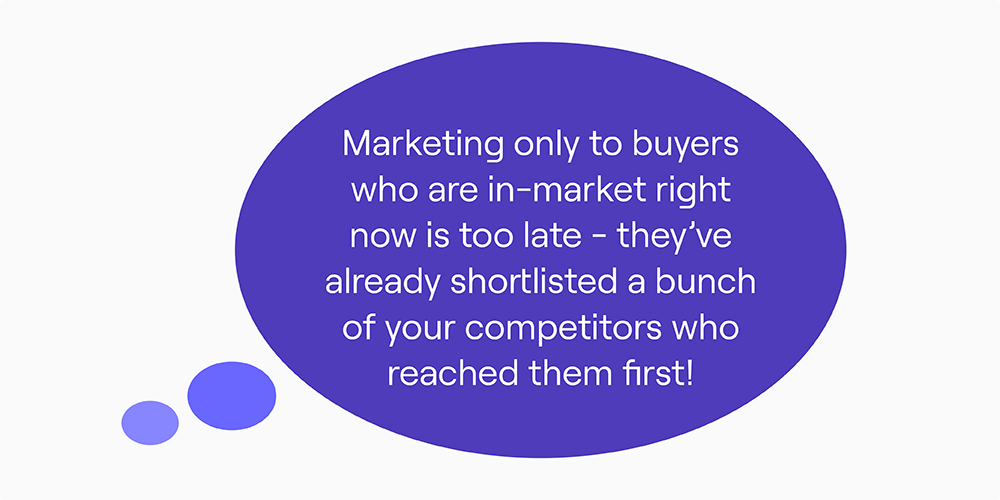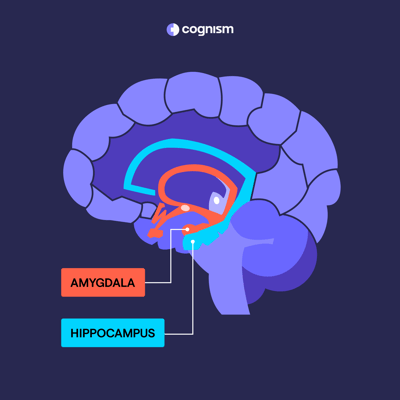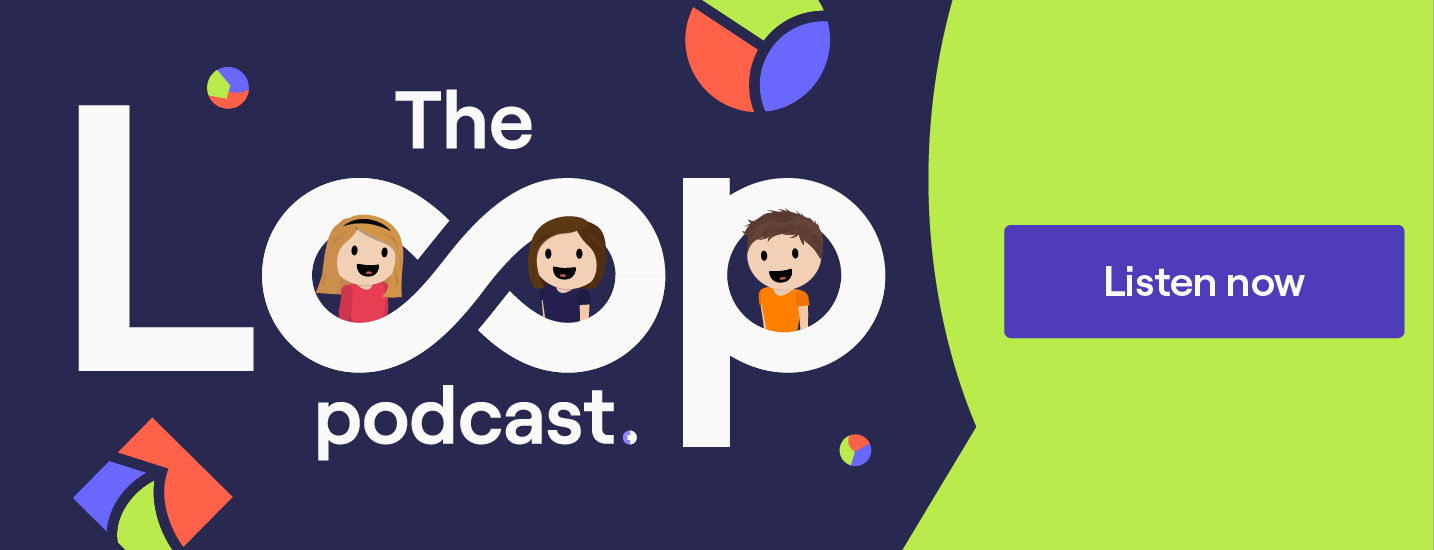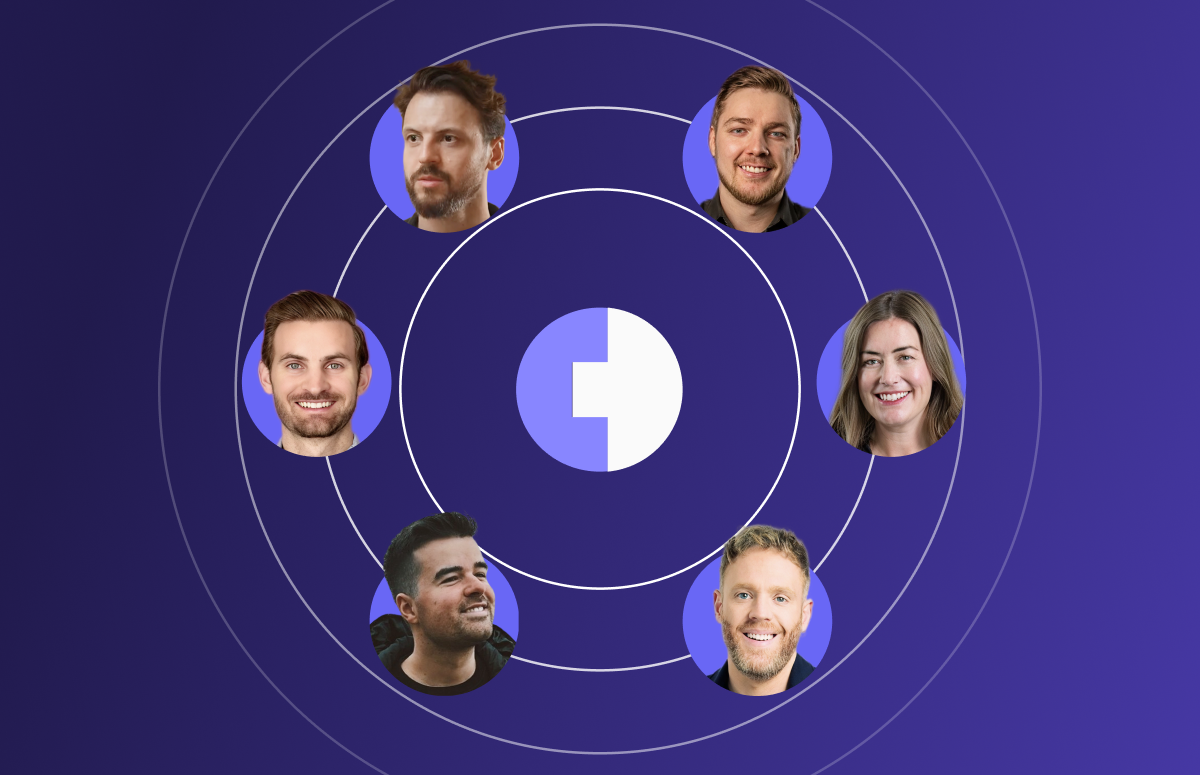B2B Brand Awareness: How to Craft Memorable Campaigns
Marketing can go a long way in driving the growth of a product or brand - but this buying process only works if the marketing activity is memorable.
In other words, you can invest loads into B2B marketing campaigns - but if your intended audience can’t remember you when they’re ready to buy… well, then it’s all a waste of time.
So, how do you make sure you’re creating memorable marketing that truly makes a difference?
You’re in the right place because we’re going to deep dive the B2B brand awareness strategy right here 👇
If you’re interested in how brand interacts with demand gen, try our course module from the DG playbook:
Why are memory and recall important for B2B awareness?
As B2B marketers, we’re all working in highly competitive markets. Trying to get attention from prospective customers is hard and only getting harder.
And as we all know, on top of this, B2B buyer behaviour has changed.
- Buyers want to research independently before getting in touch with a salesperson.
- Buyers start their research with a small set of businesses they can recognise and recall.
This shift has made marketing vital to getting onto that list of initial vendors.
Only marketing can reach buyers early enough in the process to start building trust, credibility and relevant associations in their minds.
So that when buyers do come in-market, they remember your brand first.

In other words - if your marketing campaigns aren’t building relevant memory structures in the minds of your target customers, then they won’t remember you. They won’t shortlist and consider you.
That means your B2B brand awareness strategy has failed before it’s even begun!
Why awareness isn’t enough to be remembered
But not only do you have to be recognised, you have to be remembered for the right things. And associated with the right buying triggers and outcomes.
For example, Drew Leahy, Head of Product Marketing at HockeyStack said:
“Salesforce did some research not too long ago and discovered they have an awareness problem.”
“And I think a lot of marketers would say:”
‘Salesforce - an awareness problem? Everyone knows who Salesforce is!’
“But the problem wasn’t that people didn’t know that Salesforce existed. The problem was that their target audience didn’t really know what they sold.”
“So they had to put together branding campaigns that built memories - attached to associations that they wanted people to have about their brand.”
Getting buyers to remember you when they go in-market is most of the battle. And the good news is - buyers are looking for shortcuts. They want it to be easy to find a solution.
Drew adds:
“In complex buying situations - buyers have a lot of options and they want anything that will make that decision-making process faster and easier.”
“So if you’re easy to recall when a buyer realises they have an issue - without them having to go to Google to search for related terms - it’s such a massive advantage.”
AKA - If you’re already front of mind with a buyer, and associated with solving specific problems, your B2B marketing campaign will make much more of an impact. Why?
Because your potential customers already recognise your brand and what you sell.
How to make buyers aware of you when they come in-market
Truth is, your marketing team can use endless activities to make people remember you.
And the more unique their B2B campaigns, the better - you want to stand out from what everyone else is doing.
But there are a couple of things you should prioritise.
- Associating yourself with category entry points.
- Baking emotion into your marketing.
- Creating a distinctive brand.
Category entry points (CEP)
These are the triggers that happen in any B2B buyer’s life that cause them to go in-market for a product.
For example, at Cognism - a CEP might be that a prospective buyer is expanding into a new region and needs contact data for their sales team to reach out to in this new area.
The idea here is that you associate yourself with as many of these CEPs as possible, so that when they happen in buyers’ lives, your company pops into their mind and they add it to the list of vendors they’re looking at.
Drew said:
“This is a great shortcut when building associations because most businesses will get stuck at the question of ‘what do we associate ourselves with?’.”
“Of course, you have to broadly associate yourself with the category you sell - that’s a good idea.”
“But going deeper and narrower, associating yourself with the situations that arise when people would need a solution like yours.”
How Cognism builds brand awareness
Well, we know that one of our core use cases is salespeople cold calling. So, we create B2B campaigns around cold calling and increasing cold calling success.
Here are a few things we do to build that association between our brand and buyers:
- Always on content ads on LinkedIn where we serve cold calling scripts, guides and trends.
- A cold calling live webinar series which serves as a training resource for reps.
- We work with cold-calling SMEs like Morgan J Ingram to distribute our content.
- Our internal sales leaders provide cold calling content on their personal LinkedIn profiles.
How to make B2B marketing more emotional
When we talk about emotion in marketing - we aren’t suggesting you move buyers to tears. It’s unlikely you’ll be able to tie your product to such intense emotions that make your buyers cry.
But there are a lot of human emotions that you can spark through your marketing efforts. Such as joy through humour, sympathy, or nostalgia.
But why is creating an emotional reaction so important in B2B campaigns?
Drew explains:
“Typically, the things that you remember from your life are joyous or traumatic. And that’s because there’s an overflow of strong emotion.”
“Your brain is better at remembering things when emotion is involved.”
The science behind this allows us to understand why. Drew summarises:
“The amygdala, which is the emotional processing part of your brain, is stimulated when you’re faced with emotional triggers. At the same time, the hippocampus is triggered, which is the episodic memory part of your brain.”
“Because of this, the amygdala enhances the perception of the hippocampus. This helps the hippocampus store memories more effectively.”
“That’s why emotion is so closely tied to memory - because those two parts of the brain work together.”

As mentioned above - we aren’t trying to make people feel overwhelming emotions. Just to add an emotional element to some of your marketing.
And it doesn’t need to be all of your marketing content, either. There’s still a place for educational, relevant content. But sprinkling some emotions on top will help to make your brand more memorable.
Using humour
The easiest and most commonly used is humour in B2B marketing - it’s a great way to add levity to a situation and make people feel happy.
However, you need to find a way to be distinct in your humour. Because it’s so commonly used, you need to find a way to stand out.
Using a strong point of view
Another way to spark emotion - especially within the context of a more rational B2B campaign - is to present a strong point of view.
Drew explains:
“If someone has a worldview, a way they understand their industry or how they do their job, they generally feel pretty strongly about it.”
“And if you can confront that worldview with something that challenges it, backed up with evidence - you’re now tapping into emotional logic.”
A great example of this is Chris Walker. He was able to confront a lot of lead generation fanatics with a very rational and logical argument for demand generation.
Confronting people’s beliefs about the best way to do their job and converting people to his way of thinking.
Drew adds:
“Find the places where there are two opposing views - and work hard to find the right answer. If you can find the right answer and back it up with evidence, then that’s hard to disagree with.”
“And you can confront the people who believe the opposite way with this rational argument which forces people to change how they think and feel.”
“This is a great way to introduce emotion whilst also being professional. If you’re worried about using humour and straying too far from being professional, this is a way to layer in some emotion.”
What content is easier to recall?
So we know that causing an emotional reaction with our marketing helps to make it more memorable.
So, we should be trying to choose mediums that allow us to easily convey emotion for our content.
It’s much easier to convey emotion through something like video or music.
Video, because people can engage more fully, and are able to visualise a story. This helps them to connect with the message.
And music, because there’s almost something primal about music. It stirs up an emotional response.
Ever had a song stuck in your head? Yeah, us too. Plus no doubt you’ll hear a song you once heard in an advert, and instantly remember the company it was for.
Any Brits will likely remember ‘In the Air Tonight’ and the famous ad for Cadbury’s with the gorilla on the drums.
And when paired together - these two elements can really help to create a memorable marketing asset.
Want a couple more examples of memorable adverts? Jamie Skeels and Gaetano DiNardi reacted to some B2C US and UK ad classics:
How to create a distinct brand
This doesn’t start and end with having a recognisable logo. We’re talking about a well-rounded brand. A distinctive look, feel and brand voice.
Like McDonalds fries. Stay with us…
Fries are a super common food served across the globe - many, many businesses serve them. And some would say fries are all the same.
Yet everyone knows what McDonald’s fries taste like. No matter where you go in the world, they’re the same. And they’re different from the fries you get anywhere else.
And that - in a roundabout way - is what you want to do with your brand. Make it so distinct and recognisable that while in a sea of competition, people can pick out your content as obviously yours.
Because having a strong brand has become crucial for businesses to differentiate from their competitors.
There are many benefits to creating a distinctive B2B brand awareness strategy, including:
- Giving you a template within which you can create all your content.
- Over time, if done well, brand can build a trusted relationship with consumers.
- Repetition can help you be memorable - what gets repeated, gets remembered.
Admiration and relevance over awareness
As we’ve touched upon in this article - while getting prospects to recognise your brand is an important step, that alone isn’t enough.
Drew said:
“Awareness without association is a waste of money”.
But at Cognism, we think about this a little differently. We want to take this one step further.
We want to be recognised and remembered and build associations to buying triggers. We also want to - in some sense - be admired by our target audience.
By ‘admired’, we don’t mean anything overly romantic.
We want business customers to perceive us as a leader in the space. A trusted source for information when they’re faced with a problem. For prospective customers to look to us for answers and examples of forward-thinking marketing or sales activity.
Jamie Skeels, DG Manager at Cognism, said:
“We want to build a brand that is liked and trusted - which separates us away from the rest of the pack.”
“Obviously, we need to consider reach and awareness. That is the first step. But we want to continue to engage people until they’re ready to buy, and have them like and trust us.”
We want our customers to want to choose us because we’re at the top of their list of businesses they want to work with. And for those who don’t have a need for us yet to be looking out for when they might get a chance to work with us.
Not just recognised, not just remembered in buying situations, but there’s a desire to want to work with us because we’re original, unique and admired for what we do. People want to be a part of it in some way.
Now, you might be thinking that’s a pipe dream; no one is that emotionally connected to brands.
However, research would suggest otherwise…
In fact, a study from Google and the CEB Marketing Leadership Council found that:
‘B2B customers are significantly more emotionally connected to their vendors and service providers than consumers.’
This is likely due to the increased risk that B2B buyers take when making purchasing decisions versus consumers.
For example:
A consumer deciding which air fryer to buy is only taking a financial risk against themselves. Plus, they can usually return the item.
Whereas a B2B buyer has to take the financial risk for the business - which could also reflect on their professional reputation. And could have much wider ramifications for the business.
Once buyers find vendors they know and trust, they tend to stick to what they know rather than take additional risks.
This is why we want to drive admiration for the Cognism brand.
How Cognism drives brand admiration
So how do you create a B2B brand awareness strategy that separates you from the competition - putting you top of the pile to be recalled and admired?
At Cognism, we do that through content. Which - good news - is a relatively cheap way to do brand marketing.
- Through our points of view and thought leadership.
- By producing entertaining content with a human edge.
- And creating repeatable series on multiple channels where our ICP hangs out.
Using POVs and thought leadership
Using the Easy Mode framework, we developed our strategic narrative and points of view.
They’re designed to give us direction and a stance within our content marketing strategy. Allowing us to use it to connect with our audience through thought leadership.
We deliver this narrative and our points of view across all of our available channels, e.g. our podcast, social channels, live events and more.
Utilising entertaining content
We often try to inject some form of entertainment or comedy into our communications and campaigns; this sets us apart from others in the B2B space.
Buyers are humans - just like us - so let’s talk to them that way.
Here are a few examples where we have tried to inject entertainment into our content:
Email marketing
The image we used in this email was making the rounds on social media in various memes and funny posts - so we jumped on the opportunity to use it in our email marketing.
Paid ads
No doubt at some stage, we have all listened to a few heartbreak songs after a particularly nasty break up…
And as we encourage people to let lead gen go, we thought we’d create a playlist just for this particular goodbye.
Valuable content campaign
eBooks and white papers are traditionally pretty boring. We’ve declared them dead a few times!
But we realised that long-form marketing materials, packed with valuable insights, will always be useful. We just needed to reimagine the eBook process.
This is the concept behind this launch video for The Ultimate eBook on Producing eBooks.
Organic social
We filmed this video with our SME, Morgan Ingram, testing out cold calling openers on the streets of London.
Just a bit of fun (while also building associations between Cognism and cold calling!).
How to measure brand awareness success
Measuring brand activity across the buyer journey is hard. It’s always been hard and likely always will be.
Drew said:
“If I’ve learned anything working at HockeyStack, it’s that you can’t measure anything 100% precisely. You can strive to be precise but perfection isn’t possible.”
“But we know the science. We know this stuff works. So we can emulate science as closely as possible and give it some time.”
Surveys
Drew’s first suggestion for measuring brand, associations and customer perception is to start with market research surveys.
He said:
“If you have, say, five associations you want people to hold with your brand, and you want to find out how you measure up to them right now. Go out and find a baseline.”
Ask your ideal customers and your prospective buyers’ questions about:
- What they think you sell.
- What words they’d use to describe your business.
- What reasons they think someone might buy from you.
- What content or adverts they’ve seen from you that they recall.
The answers will help you build a brand campaign that promotes a clearer picture of your B2B company.
And then ask them again in 6, 9 or 12 months to see if you discover any improvements.
Baseline growth
Another important thing to track is baseline growth. Drew explains:
“There should be a growth in sales and revenue that comes to you organically because the buying process is working. They needed your product and they came in-market, remembered you and came directly to you.”
“They had mental availability in advance of purchase and came inbound.”
“Now, this might sound easy to measure, but it isn’t that simple. Because there are many reasons that people might come inbound to you. For example, your SEO team is working effectively.”
“But if, over time, you see that baseline revenue growing steadily, it’s a good indication that the brand activity you did last year and the year before is paying off.”
Branded search
Another way to get an indication of whether your brand efforts are working is through tracking your branded search.
How many people are searching for your company name on search engines?
Because realistically, they only Google your name if they remember your brand exists and are trying to visit your website.
To take this a step further, you could look at your share of search - comparing how many branded searches you have compared to your competitors.
And whether that baseline share of search is growing over time.
Engagement
Engagement is no longer a vanity metric - it’s a super-important way to tell if your audience knows and likes your brand.
Track these metrics as part of your content marketing strategy:
- Have you got growth in your follower count?
- A growth in customer engagement rates?
- Are people following you in multiple places?
Self-reported attribution
You know those ‘how did you hear about us?’ questions?
They can be incredibly insightful when it comes to finding out what content or ads prospects remember.
They might have discovered you through your podcast, LinkedIn channel or somewhere else. Meaning you can double down on the memorable channels that work best for your target market.
B2B brand awareness: the last word
Brand is vital in modern marketing. You need to be reaching buyers early in the buying process, building trust and making yourself memorable, so that when they come in-market, they remember and choose you as a vendor.
To create strong brand awareness, you need to commit to it for the long haul. The brand actions you take today will accrue and compound over time.


/SMB%20ABM/Blog_Image_How%20SMBs%20Can%20Run%20Enterprise-Level%20ABM%20on%20a%20Lean%20Budget%20%20Resource%20Card.webp)

